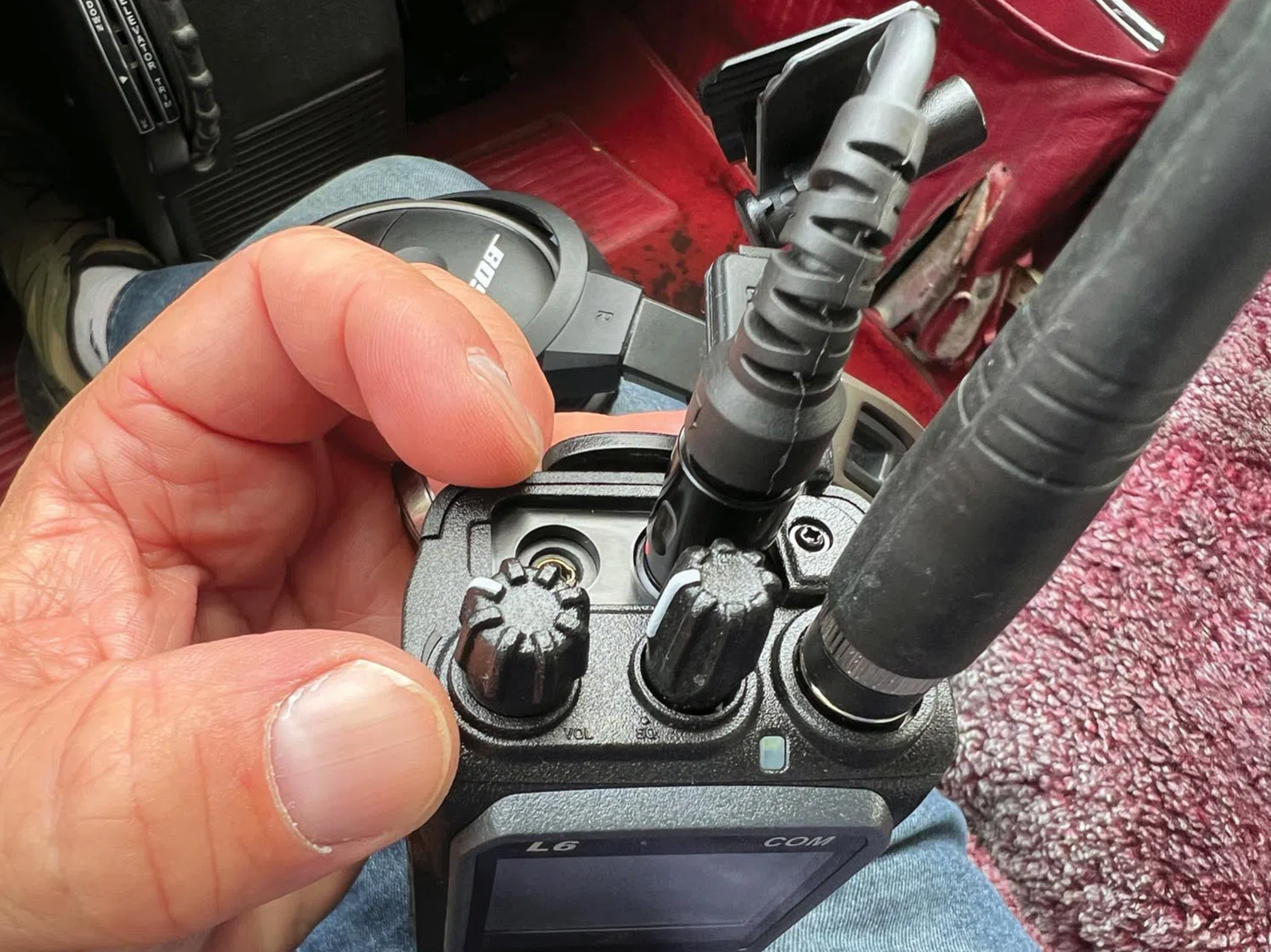Sporty’s L6 COM Radio Review
The first portable radio with a built-in LEMO jack.

We found the independent volume and squelch controls on the L6 much easier to use than the single stalk control on the PJ2+. [Larry Anglisano]
Sporty’s has enjoyed sizable success with its PJ-series portable transceiver. It’s priced right, backed by good support and has smart features. The latest in the lineup is the L6, which has all of the same basic features of the current PJ2+, but with a direct plug-in LEMO headset interface in place of the twin-plug GA headset interface. For users that only fly with LEMO-equipped headsets, the L6 makes sense for convenient on-the-fly backup. Unplug the headset from the panel and plug directly into the radio without any adapters.
Seamless Backup
If you’re building a modern panel, you’ve likely thought about panel accessories like power ports—including a single-plug LEMO headset interface for at least the pilot and copilot audio jacks. The LEMO interface is convenient because it not only reduces the headset audio cable from two to one but also provides ship’s power input for an ANR headset.
Bose and Lightspeed, to name two manufacturers, offer LEMO options for their headsets, and the single-plug power and audio cable makes for a cleaner interface and eliminates the batteries in the headset. LEMO has become a popular configuration over the years both for OEM and aftermarket applications.
Priced at $279, the L6 is tightly designed around the decent-performing PJ2+ rig, which is priced the same and is still in the Sporty’s radio lineup. In our long-term testing we’ve found the PJ2+, with its 6-watt transmitter and noise-limited circuit, to be a good value and a good choice for emergency backup. Connect the radio to an external antenna and you’ll communicate with similar performance as a panel radio. But you won’t plug a twin-plug GA headset into the L6. It caters strictly to the LEMO interface and powers the ANR headset through the single-plug LEMO connector, which plugs in at the top of the radio’s chassis.
The L6 also has an onboard USB-C connector for plugging in a 2.4-amp power supply. This USB port can bypass the batteries, but for power supplies that output less than 2.4 amps, the radio won’t transmit—only receive. The L6 requires six AA alkaline batteries when not plugged in to external power.
Worth mentioning is the independent volume and squelch controls on the new L6, replacing the single stalk control that’s on the PJ2+. We found the dual controls much easier to deal with.
Performance, Features
We tried the new L6 side by side with the PJ2+ radio and found nearly identical receiver and transmitter performance. It has the same 1.5- by 1.63-inch LCD display and an auto-lit keypad, plus it sits in the exact same chassis as the PJ2+. Like the PJ2+, the L6 has a 3.5-mm earbud jack that disables the radio’s internal microphone and speaker. It also has 20-frequency storage and scanning, a dedicated 121.5 key, active/standby frequency flip-flop and a NOAA weather radio band.
Sporty’s says battery endurance will vary depending on how much you transmit, but for powering a LEMO-equipped headset and using the radio for normal transmitting and receiving, you can plan on between 5 and 10 hours of battery life. We used the L6 with a new Bose A30 (and older A20) and a couple of Lightspeed models, including the new Delta Zulu. But there’s a caveat.
Sporty’s said that there might be some interference issues when transmitting when connected to a Lightspeed Delta Zulu (and some other non-TSO models without shielded cables). What can happen is the cabling acts as a transmitter—perhaps only happening on certain frequencies. We didn’t experience any issues in our evaluation, but Sporty’s provides ferrite grounding beads for users who do have a problem. Simply position the ferrite bead near the LEMO plug, or absent a bead, you can wrap the headset audio cable around the radio’s rubber antenna for better grounding.
The first ever portable radio with a direct plug-in LEMO headset interface, we think Sporty’s has another smart product in the L6.
Visit www.sportys.com for more information.
This article first appeared on KITPLANES.com.

Subscribe to Our Newsletter
Get the latest Plane & Pilot Magazine stories delivered directly to your inbox






